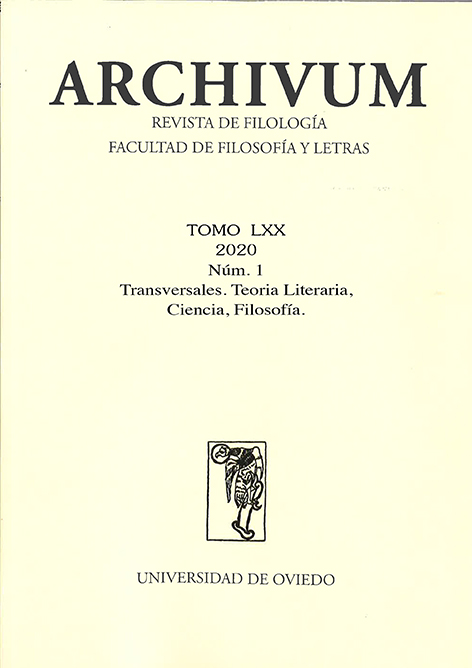Abstract
Traditionally, alluding to literary knowledge implied limiting specific characteristics of a work or establishing different methodologies in order to approach it and interpret it. Recently, thanks to new perspectives like the cognitive poetics, literary studies included among their interest the cognitive processes that impregnate the discipline in multiple senses. The principal aim of the text is to collect, with the help of cognitive sciences and neuroscience, some of the current cues about the literary reading phenomenon. Reading and understanding a text are embodied expressions that, consequently, are nourished by the corporal and interactive experience of the reader. Although an important number of the studies focused on the figure of the reader that favours emotion, the objective here is to go back to a previous state when sensorimotor mechanisms are called. Reading becomes an exercise of simulation where a resonance between the text and the embodied memory (motor, tactile and interoceptive sensation) of the reader is produced.
References
BOLENS, G. (2008) Le style des gestes: corporéité et kinésie dans le récit littéraire, Lausanne, Éditions BHMS.
JEANNEROD, M. (2006) Motor cognition: what actions tell the self, Oxford, Oxford University Press.
KUZMICˇ OVÁ, A. (2012) “Presence in the reading of literary narrative: a case for motor enactment” Semiotica 189, pp. 23-48.
LAVOCAT, F. (2016) Interprétation littéraire et sciences cognitives, Paris, Hermann.
PATOINE, P-L. (2015) Corps-texte, pour une théorie de la lecture empathique: Cooper, Danielewski, Frey, Palahniuk, Lyon, ENS Éditions.
PUNDAY, D. (2003) Narrative bodies: toward a corporeal narratology, New York, Palgrave Macmillan.
SPOLSKY, E. (1996) “Elaborated knowledge: Reading kinesis in pictures”, Poetics today, Vol. 17, No. 2, pp.157-180.
ZUNSHINE, L. (2016) “The commotion of souls” SubStance, #140, 45.2, pp.118-142. Disponible en https://hcommons.org/deposits/item/mla:889/ [Fecha de consulta: 9 de enero de 2019].

